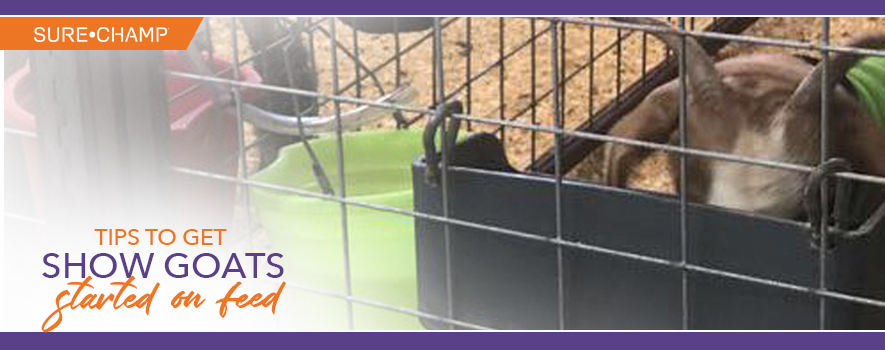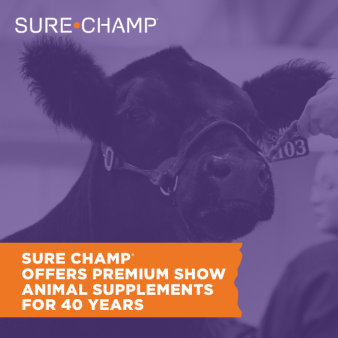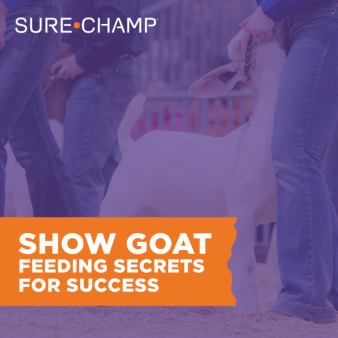
Trends have changed over time in the competitive livestock arena. Frame size, muscling requirements, feeding and fitting techniques have evolved over the years, and perhaps one of the hottest trends to hit the show ring in the past few decades is the Boer goat. Showing market goats is relatively new, as in your grandpa probably didn’t do this “back in his day.” As with any livestock project, getting a new project animal adapted to a new environment, getting them and keeping them on feed and water and keeping them healthy are all first steps to a successful show project.
Justin Burns, owner of J & J Livestock, Galt, Calif., raises, shows and sells Boer goats across the country. He said the number one thing exhibitors need to do is ask questions of the breeders or sellers of their new show goat projects. Find out about their genetics. Is your new show project a faster growing, early maturing animal based on its parentage or siblings’ past performances? Or, do its genetics take added time to bloom and mature? And, find out about what type of feed the animal has been on to help make that transition as smooth as possible when getting your new goat home.
“Finding out what kind of feed the goat has been on and gradually transitioning to the kind of feed the new owner/exhibitor wants to put the goat on is very important to getting it acclimated,” Burns said. “If you’re keeping them on the same feed, minimizing stress and keeping the goat in a quiet environment that is sustainable for the goat is best when introducing it to a new show barn.”
When it comes to feed, Burns feeds an alfalfa-based, vitamin-fortified pellet that the goats can stay on from weaning through their final destination. He does not recommend using a textured feed because of the inconsistency he’s seen. With textured feed, the goats will sort off the corn and eat that compared to the vitamin pellet they really need in their diet. Since he is feeding an alfalfa-based pellet, he said his goats don’t require much extra forage in their diets.
“Feed quality nowadays is good enough we don’t have to give them the roughage that we used to. However, when you first get young goats home, giving some forage is important just to keep their gut going. They might not readily go to their feed in the beginning, so give them some alfalfa or grass hay that they can pick from,” he said.
Burns emphasizes the importance of fresh feed, especially in the younger goats. He said even if they have a little left in their feed pan when it is time for the nightly feeding, it is acceptable to add more and mix it together. However, if they still have feed in their pan by the morning feeding, empty the pan, and start fresh.
A combination of good genetics, good nutrition and keeping them healthy will help a young exhibitor have a successful project, according to Burns. There are many supplements out there, and he said the key is knowing which supplement will work for the given situation.
“Our great ones have never had a sick day in their life. We’ve actually tracked that, and they never have. Simply, keeping them healthy, keeping good feed in front of them, keeping their water as fresh as possible and minimizing stress is the biggest thing.”
“In terms of vitamins, we encourage our customers to use Vita Charge® Liquid Boost®. We feel that it keeps the goats’ appetites up and helps minimize stress. We drench it to them orally, so we know they get it, and there is no foreign taste in their water off the bat,” Burns said.
He adds that keeping goats healthy, just like any livestock, begins with digestive health. That is where the Amaferm® advantage in the Liquid Boost and other supplements Burns uses and promotes to his customers comes into action. Amaferm®️ is a prebiotic designed to enhance digestibility by amplifying the nutrient supply for maximum performance. It is research-proven to increase intake, digestion and absorption. It is research-proven to increase intake, digestion and absorption. Amaferm is in all Vita Charge and Sure Champ® products.
“The biggest game changer has been keeping them on Sure Champ Spark® and having a source of Amaferm to keep their gut health right. Keeping that gut healthy, keeping them going forward is what makes those goats so much better. And when we get into hot months, we give them a good dose of Sure Champ® Climate Control Paste (transitioned to Vita Charge® Climate Control Gel July 2019), three times a week. It has really helped keep our goats on feed & water during the hottest times of the year,” Burns said.
Although the Boer goats are relatively “new” to the livestock show ring, the importance of a good nutrition and health plan is not. Follow these simple tips to get your show goat project acclimated and eating because if they’re not eating, you’re not winning.

